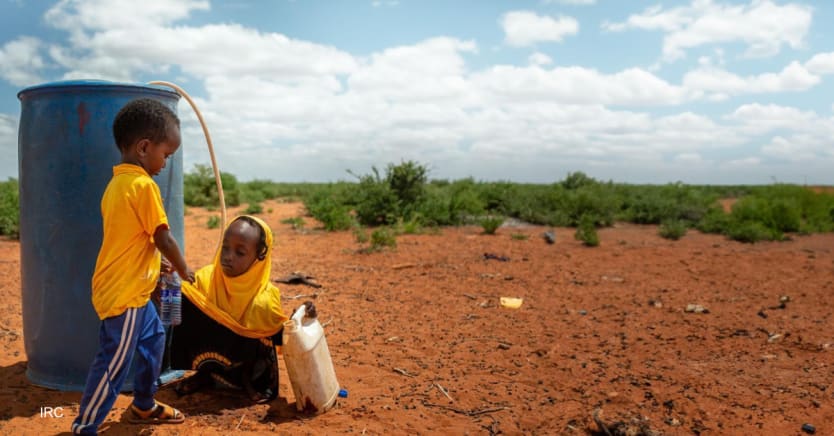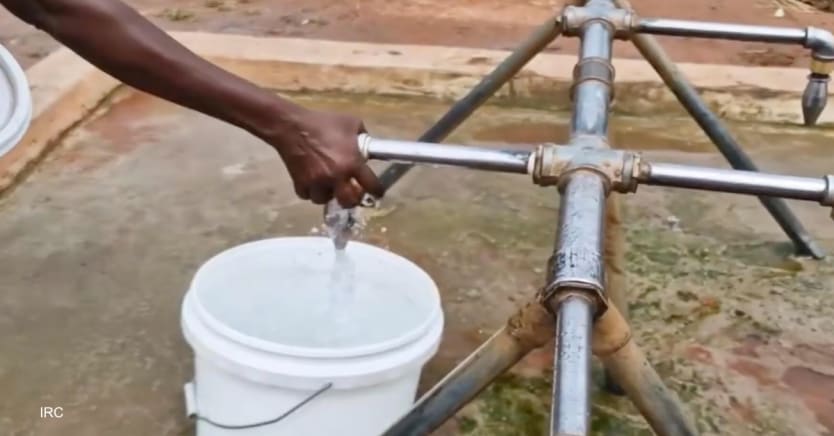
In west Irbid, an urban area in northern Jordan near the Syrian border, a critical infrastructure project is underway. Over 120,000 people in the area lack access to urgently needed first-time sewerage. Once completed, the West Irbid Wastewater Project will construct and connect wastewater networks in 18 towns, transforming lives and addressing the economic, health, and sustainability needs of local residents and refugees.
On its own, this investment is worth celebrating. But equally transformative as the project itself is the unique partnership that arose as a result of this investment. The investment, financed by the European Bank for Reconstruction and Development, is also the first pilot of an innovative and powerful approach to financing development projects in fragile contexts — the Advisory Model for Investor and Humanitarian Partnerships.
This model has enabled the community engagement work in west Irbid to be inclusive and socially effective, by engaging the refugee population more meaningfully than it would have otherwise been. Early results indicate that if adopted more widely, such partnerships could fundamentally transform how humanitarians and investors of all kinds partner to address humanitarian challenges.
The gap between humanitarian needs and financial responses
Globally, humanity faces enormous problems: from the climate crisis and protracted conflicts to a migration crisis that has seen more people who were displaced in 2023 than any time since World War II— over 100 million people, which would be the world’s 15th largest nation. The humanitarian sector is limited in its response as it faces a massive funding gap: $41 billion was unfunded as of October 2023. Furthermore, given the protracted nature of crisis and displacement, longer-term sustainable solutions are critical — particularly ones focused on economic empowerment, climate financing, health, sustainability, and housing. Yet, humanitarians have neither the skill sets nor the resources to execute such large-scale investment projects.
Multilateral development banks and investors are recognizing that their mission is increasingly concentrated in fragile states and large refugee-hosting communities. Last September, the World Bank finalized its “Evolution Roadmap,” doubling down on the need to recognize and strengthen partnerships. This development is welcomed by the humanitarian sector and reflects the understanding that traditional tools and partnerships are unable to effectively build inclusive infrastructure in more fragile contexts or to help countries adapt to the effects of the climate crisis. Why? Because bankers lack experience in delivering projects or services in humanitarian settings that benefit and reach populations affected by displacement, conflict, or crisis.
What's needed, then, are new ways of partnering between bankers and humanitarians in refugee and fragile contexts. By engaging a more contextual and nuanced level of advice from humanitarians on the implementation of investments, investors can avoid wasting millions or billions of dollars.

The Advisory Model for Investor and Humanitarian Partnerships
The “Advisory Model” is a new approach piloted by the Directorate-General for European Civil Protection and Humanitarian Aid Operations and the Airbel Impact Lab at the International Rescue Committee which can help address the gaps in traditional ways of financing infrastructure in fragile contexts. In 2021, players from across sectors came together to urge greater collaboration between multilateral development banks and NGOs. EBRD, which was already working in Jordan to build the West Irbid Wastewater Project, established a pilot partnership with the International Rescue Committee to support the project.
With over a decade of programming on the ground and deep connections to the Syrian refugee community, IRC operates as a “humanitarian in residence” on the project. IRC is providing EBRD enhanced technical assistance, such as oversight and advice on the project’s community engagement plan led by the Jordanian technical consultancy Royal Scientific Society. This work has ensured meaningful engagement of both Syrians and Jordanians in the project and created a more inclusive process.
Our theory of change? If humanitarian groups can provide advisory services rooted in client-centered, localized expertise to investors, the social impact of investments on crisis-affected populations will increase and social risks to investments will decrease, hopefully incentivizing further such investments. The model has been designed to be flexible and can be applied to investors from multilateral development banks, development finance institutions, as well as the private sector — from startups and venture capital to private equity.
Catalyzing impact
West Irbid is just one of several pilots underway. With Flat6Labs, we’re supporting an entrepreneurship platform to grow the refugee-led startup ecosystem in the Middle East. To ensure its success, IRC partnered to bring refugees to join the “StartMashreq” business accelerator program that offers comprehensive support to entrepreneurs. In Jordan, we’re working with startup AquaPoro to scale an innovative drinking water technology that captures water from the surrounding air, offering a cheaper alternative to IRC's current sourcing model. IRC has procured the use of AquaPoro’s devices and will be testing them in its health clinic in the Zaatari refugee camp. We’re using the advisory model to design new ways to support refugee-lens businesses in Latin America, to investigate debt swaps for humanitarian aid, and to bring solar power to communities in need in Lebanon. And more.
By tapping humanitarians as consultants, cross-sector partnerships can bridge gaps between investors and the humanitarian sector. We can generate more funding to address priorities such as climate adaptation for communities on the front line of the climate crisis. We can leverage private finance and public funding in innovative ways. And we can better inform community engagement and circumstances on the ground — humanitarians know how to reach fragile vulnerable communities and bring deep expertise balancing risk and social outcomes in conflict zones.
We’re already learning critical lessons. Having humanitarians in the room can increase the impact of investments in affected communities. Strong relationships based on mutual understanding of one another’s skill sets can positively impact investor decision making. And most powerfully, once we’ve achieved proof of concept, it becomes easier for other investors to envision a role for humanitarians in their own projects.
These partnerships can take a wide variety of shapes and approaches — the key is that institutions across sectors take a learning-by-doing approach and try, build, and scale them. Progress depends on it.
Download the inaugural “Advisory Model Partnership Playbook” here.









